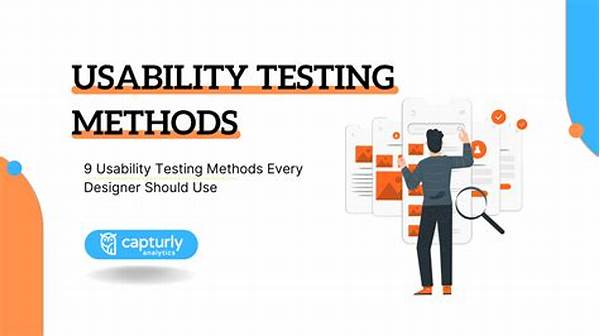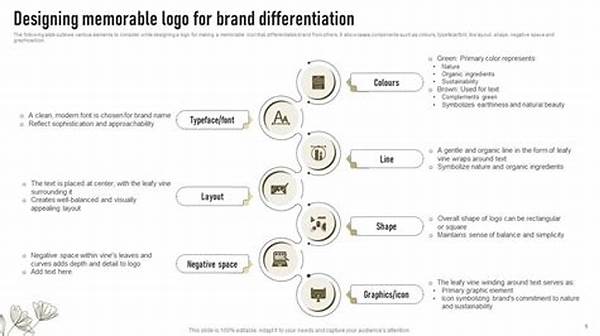Usability testing is a crucial phase in the development of digital products. It ensures that users can interact with your design as anticipated, which ultimately leads to a seamless user experience. Conducting usability testing effectively requires a strategic approach, often outlining specific methods tailored to your product and audience. Here, we delve into how to optimize this process through various methods, ensuring that usability testing yields valuable insights for enhancing user experience.
Read Now : “virtual Reality In Modern Art”
Understanding Methods for Effective Usability Testing
A structured approach to usability testing can make a significant difference in the outcomes. One major method is task-based testing, where users are given specific tasks to complete. This method provides direct insights into how users interact with specific features of the product. Observing users perform these tasks can reveal usability issues and areas of potential improvement. Another effective method is the think-aloud protocol, which encourages users to verbalize their thoughts as they navigate through a product. This technique uncovers users’ mental models and identifies any discrepancies between user expectations and product functionality. Remote usability testing, another invaluable method, allows you to gather insights from a diverse user base across different geographies without being physically present. Additionally, eye-tracking studies give quantitative data on where users’ attention is focused, helping designers understand visual engagement. Combining these methods for effective usability testing can provide comprehensive insights, leading to an improved user experience and product success.
Key Components in Methods for Effective Usability Testing
1. Task-Based Testing: This core method involves users performing specific tasks, revealing obstacles in user interaction.
2. Think-Aloud Protocol: Users verbalize their thoughts during interactions, uncovering insights into user expectations and design perception.
3. Remote Usability Testing: Ideal for accessing a wide-ranging audience, enhancing test diversity.
4. Eye-Tracking Studies: Provides data on user attention, aiding in optimizing visual layout and engagement.
5. Card Sorting: This helps understand how users categorize information, crucial for effective information architecture.
Importance of Diverse Methods for Effective Usability Testing
Employing a variety of usability testing methods helps in building a comprehensive understanding of user interactions. Each method offers distinct insights, and when combined, they form a robust framework for testing usability. For instance, task-based testing provides real-time interaction challenges, while the think-aloud protocol offers a glimpse into the user’s cognitive process. Remote usability testing extends this by incorporating a global user spectrum. Methods such as eye-tracking are particularly valuable for visual content-heavy products, as they help designers identify which areas garner the most attention. By employing a blend of these methods for effective usability testing, stakeholders can ensure a well-rounded examination of the user experience, addressing both functional and emotional aspects of interaction with the product.
Best Practices in Implementing Methods for Effective Usability Testing
1. Define Objectives: Clearly outline what you intend to achieve with usability testing, from improving navigation to enhancing emotional engagement.
2. Select Participants Wisely: Ensure participants reflect your actual user base to obtain relevant insights.
3. Create Realistic Scenarios: Scenarios should mimic real-life use cases to draw meaningful data.
4. Prioritize Observations: Note critical pain points during the test to prioritize fixes.
5. Iterative Testing: Continuous iteration refines the product, addressing newly uncovered issues over time.
6. Utilize Technology: Employ advanced tools, like heatmaps and recording software, for detailed analysis.
Read Now : Developing A Unique Artist Brand
7. Solicit Feedback: Encourage post-test interviews to gain a deeper understanding of user opinions.
8. Collaborate Across Teams: Encourage cross-functional teamwork to incorporate diverse perspectives in test evaluation.
9. Analyze Holistically: Consider both quantitative and qualitative data for a balanced view.
10. Implement Changes Timely: Promptly address the issues discovered to enhance user satisfaction.
Benefits of Combining Various Methods for Effective Usability Testing
One of the core advantages of utilizing multiple methods for effective usability testing is the holistic insight it provides into user behavior. By combining task-based testing and the think-aloud protocol, for example, you’re able to glean not just the challenges in executing tasks, but also understand the cognitive reasoning behind user actions. Remote testing caters to a wider demographic, revealing geographic or cultural nuances in user interaction that might otherwise go unnoticed. Eye-tracking can supplement these findings by highlighting the most engaging elements of your visual design. Together, these approaches offer a comprehensive understanding of usability, guiding more informed decisions in product development.
Integrating multiple methods for effective usability testing also accommodates various learning styles and user preferences, ensuring that the feedback gathered is robust and representative of the actual user experience. It fosters a deeper engagement of participants in the testing process, who may find certain methods like card sorting intuitively engaging, while others might prefer the straightforwardness of task-based testing. In augmenting these varied insights, developers and designers can address both surface-level design improvements and deeper structural changes, ultimately leading to products that are not just functional, but a joy to use.
Enhancing Product Design with Methods for Effective Usability Testing
Usability testing is not a one-size-fits-all approach, and tailoring methods to specific project needs is critical for getting the best results. For instance, when working on a heavily visual interface, incorporating eye-tracking with task-based testing ensures a balanced evaluation of both interaction flow and visual engagement. Effective methods for usability testing integrate seamlessly into the product lifecycle, encouraging continuous development and refinement. Ensuring that usability testing is ingrained in the development process also means that feedback loops are shorter, allowing for quicker implementation of necessary changes and adjustments.
The iterative nature of modern product development underscores the importance of continuous and evolving usability testing methods. Integrating feedback from users at various stages ensures that a product remains user-centric beyond its initial launch. By recognizing that user behavior and expectations are fluid, developers and designers can maintain a competitive edge by consistently aligning their product with user needs and technological advancements. Ultimately, the goal of employing effective usability testing methods is to create products that not only meet user’s expectations but exceed them, fostering satisfaction and loyalty.
Conclusion: The Future of Methods for Effective Usability Testing
In concluding, the methods for effective usability testing are continually evolving alongside innovations in technology and changes in user behavior. New tools and techniques will certainly emerge, offering even more precision in understanding user interactions. As businesses strive to be more user-centric, the focus will likely be on developing adaptive testing methods that leverage real-time data and automation to deliver instant insights.
To remain at the forefront of user experience design, embracing these advancements and integrating them into the usability testing process is essential. Further, as inclusivity becomes a growing concern, usability testing will likely expand to ensure products meet the needs of a diverse user population. By doing so, businesses not only enhance the usability of their products but also foster a culture of accessibility and user empathy. Adapting these evolving methods will ensure products are not only functionally robust but also inclusive and enjoyable, ultimately positioning them for success in competitive markets.



